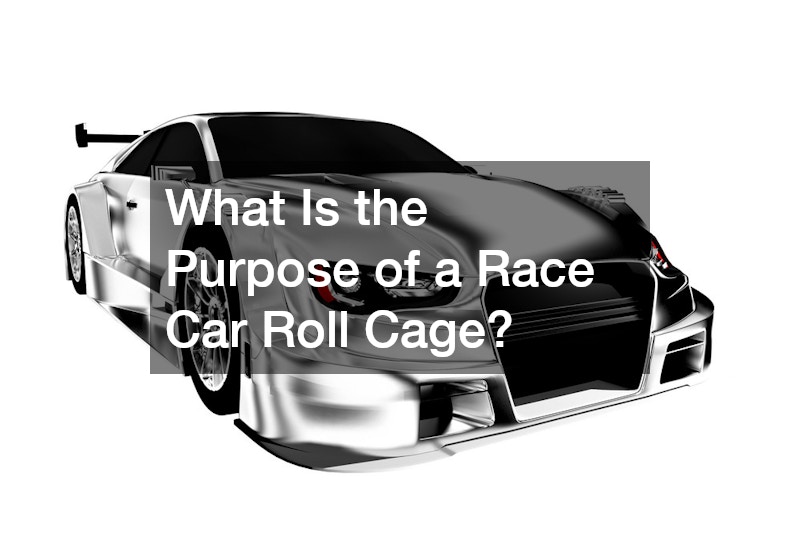
A race car roll cage is a crucial component in motorsports, designed to enhance driver safety and vehicle performance. It acts as a protective framework around the driver, providing a structured defense against impacts.
Roll cages are engineered to protect drivers during crashes by absorbing impact forces and distributing them throughout the structure. This design minimizes potential injuries by preventing the car's cabin from collapsing upon itself.
Video Source
The effectiveness of a roll cage in mitigating crash impact lies in its strategic placement and construction. By redirecting impact energies, the cage ensures that the forces are not concentrated on the driver but rather dispersed over a larger area.
In many racing disciplines, the integration of roll cages is a mandated safety measure. These guidelines ensure that the highest safety standards are maintained, safeguarding drivers under the extreme conditions of motorsport.
Apart from its protective function, a roll cage enhances the overall structural integrity of a race car. It serves as a reinforcing element, maintaining the rigidity and cohesion of the vehicle's chassis under high-speed conditions.
This reinforcement is vital during competitive events, where cars often face intense stress from sudden accelerations and tight cornering. A well-designed roll cage helps the vehicle withstand these forces without deforming.
Roll cages also contribute to the longevity of racing vehicles by preserving their structural soundness over time. This aspect is crucial for both performance and safety, as cars that maintain their form are less likely to experience mechanical failures.
The addition of a roll cage inevitably increases the overall weight of the car, which can impact its performance characteristics. While heavier vehicles might experience reduced acceleration, this trade-off is often considered worthwhile for the enhanced safety and structural benefits.
However, innovations in material science have introduced lightweight roll cages made from high-strength alloys, thereby mitigating weight concerns. These modern designs maintain the balance between necessary safety features and optimal racing performance.
Racing teams often have to make strategic decisions about the type of roll cage to use, depending on the specific requirements of the race circuit. This ensures that the added weight does not compromise the car's competitiveness.
Roll cages can have varying effects on the aerodynamic profile of race cars, a factor that is critical in high-speed motorsports. A well-integrated roll cage can complement the car's design, minimizing any negative aerodynamic impacts.
Engineers work to ensure that the roll cage's structure does not interfere with the airflow around the vehicle. Properly designed cages can actually aid in enhancing aerodynamic efficiency, contributing to better speed and stability during races.
Considering aerodynamics is particularly important in disciplines like Formula 1, where every fraction of advantage matters. Therefore, when designing roll cages, balancing safety features with aerodynamic performance is paramount.
Full cages provide comprehensive protection by offering a complete structure that envelops the driver, offering maximum safety benefits. These cages are typically welded directly to the car's frame, ensuring a robust and permanent installation.
In contrast, bolt-in cages offer more flexibility, allowing for easier installation and removal. These are favored in racing categories where regulations might require frequent modifications or lightweight setups.
Each type of roll cage has its specific applications, with full cages being ideal for high-risk races and bolt-in cages serving well in versatile racing environments. Teams choose based on the specific demands of their racing series and logistical considerations.
Custom roll cages are tailored to the unique specifications of particular vehicles, providing a fit that enhances both performance and safety. This customization allows teams to optimize the cage according to the car's design and the driver's needs.
Standardized designs, on the other hand, offer a more generic solution that can be fit across different vehicle models. These are often used when cost and time constraints are significant factors in decision-making.
The choice between custom and standardized designs may depend on budget, vehicle type, and racing regulations. Both options aim to provide reliable safety, with the customization offering a competitive edge tailored to specific racing conditions.
Roll cages serve as a pivotal element in race car design, providing vital safety and performance benefits. They ensure that drivers are protected during crashes while enhancing the vehicle's structural integrity and aerodynamic properties.
Different types of roll cages, from full to bolt-in, and custom to standardized designs, offer varied advantages based on the specific needs of racing teams. Understanding these distinctions is essential for teams to make informed decisions that optimize safety and competitiveness on the track.
.